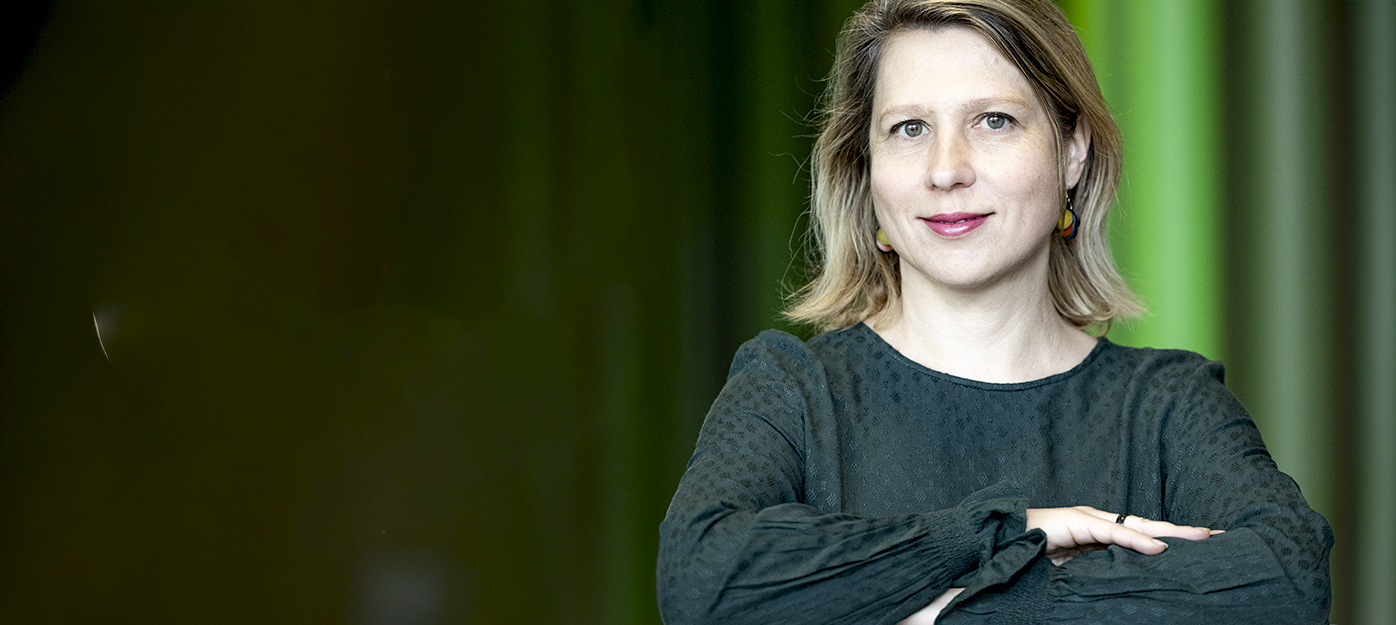FAO Investment Centre welcomes Service Chief for Latin America and the Caribbean

Service Chief Ekaterina Krivonos spoke of her experience in Latin America and the Caribbean, drawing on her expertise in agricultural policy and trade issues, and the need for win-win solutions to tackle the region’s pressing challenges.
Tell us about yourself.
I grew up in the Soviet Union, more specifically in Almaty (Kazakhstan) and Moscow (Russia), where my parents studied. My family moved to Denmark when I was 15, which is where I went to high school, got my B.Sc. in economics and worked for an engineering consulting firm focused on environmental issues and agriculture.
This experience ignited my interest in pursuing development as a career. After traveling around the globe extensively, I opted for an internship at the Inter-American Development Bank (IDB) and later began my M.Sc. and Ph.D. studies in agricultural and resource economics at the University of Maryland. While studying, I also worked as a consultant for the World Bank and IDB in Washington, D.C., focusing on agricultural trade and markets. My Ph.D. thesis was on coffee trade and understanding how farmers could get a higher share of world coffee prices.
When did you join FAO?
After my Ph.D., I moved to Santiago, Chile, where I worked at the UN Regional Economic Commission for Latin America, gaining more experience in commodity markets and trade issues. I eventually landed at FAO’s Regional Office for Latin America and the Caribbean in 2009 as Trade Officer for the region.
Several years later, I made a lateral move to the Markets and Trade Division in FAO headquarters, and then in early 2023, I joined the Investment Centre as Service Chief. I bring to the job an understanding of international financing institutions and priorities in the region, as well as knowledge of agricultural policy, markets and trade issues, where we work closely with technical divisions. It’s an exciting time. The Centre is growing its team, sharpening its geographic focus and diversifying and strengthening its partnerships.
Investing in agriculture in Latin America and the Caribbean is strategically important, as it is the largest net exporting region in the world. By 2032, the region is expected to contribute more than 30 percent to global exports of maize, soybeans, sugar, beef and poultry. At the same time, major challenges within the agrifood sector remain. Having a designated service enables deeper and longer-term engagement with countries and partners to address the specific challenges the region faces.
What are some of those challenges?
Many countries in Latin America and the Caribbean are still food insecure – a situation worsened by the pandemic and slow economic recovery. Poverty is rising. There are high inequalities within countries and across countries, exacerbated by degraded ecosystems, deforestation and increasingly intense and frequent climate shocks. The region also has the highest cost of access to a healthy diet in the world.
How can the Investment Centre help countries and partners respond to those challenges?
When we engage in these countries, we use our knowledge and networks, capitalizing on our ongoing work with financing partners and strong collaboration with the FAO country offices and technical divisions, which we aim to intensify. Our work through the Hand-in-Hand initiative has enabled us to infuse our technical contributions, like economic and financial analyses and value chain knowledge, to be more impactful as one FAO.
In May, I visited the FAO Regional Office in Santiago, Chile, along with our Centre’s Director and other colleagues, followed by visits to Honduras and Panama. This was an opportunity to really engage with our regional and country office colleagues and partners, to introduce our Transformation Plan and understand how the Investment Centre can be more effective in providing the ‘4+2’ finance and investment solutions. This includes working more with national development banks and fostering innovative finance in collaboration with partners. For example, we have been developing a pipeline of potential borrowers in five Caribbean countries for a European Union-financed impact fund called AgriFI.
The Investment Centre is demand driven, so we try to maintain strong technical capacities that can be mobilized quickly when countries and partners need them, like the ability to evaluate the environmental impacts of interventions in agriculture.
We need win-win solutions to overcome the pressing challenges. We are introducing innovative approaches, for example, by combining investment in social protection, agroforestry with climate action, agricultural extension and risk management in vulnerable areas in Colombia through a Green Climate Fund concept note. More generally, we are looking to use social, technological and financial innovations to help farmers access markets to increase incomes while also producing more diverse foods and sustainably managing their farms.
Describe your management style.
Maintaining fluid lines of communication is important. I want people to know they can talk to me. We are a small but growing team, and as I am still new to this role, I rely on colleagues’ technical inputs, views and experiences working with our partners. I’m also very results driven, which matches our team’s mission to produce high-quality results, often under time pressure.
I benefit greatly from sharing knowledge and experiences with the entire management team – from the more seasoned colleagues to other newbies like me. I hope we can be innovative and creative collectively in how we engage with our partners and operate internally.
I dream of the Investment Centre being seen as a repository of specialized investment services, tools, approaches and knowledge that can be applied directly to investment to improve people’s lives in the foreseeable future.
What are some fun facts about you?
Outside of work, the thing I enjoy most is being in nature with my family. On the weekends, you’ll likely find us in the mountains, on the beach, hiking in one of the national parks or skiing in the winter. Having moved around a lot, I speak six languages. We also have one son who is Chilean and another American, as they were born while I was working in those countries.
